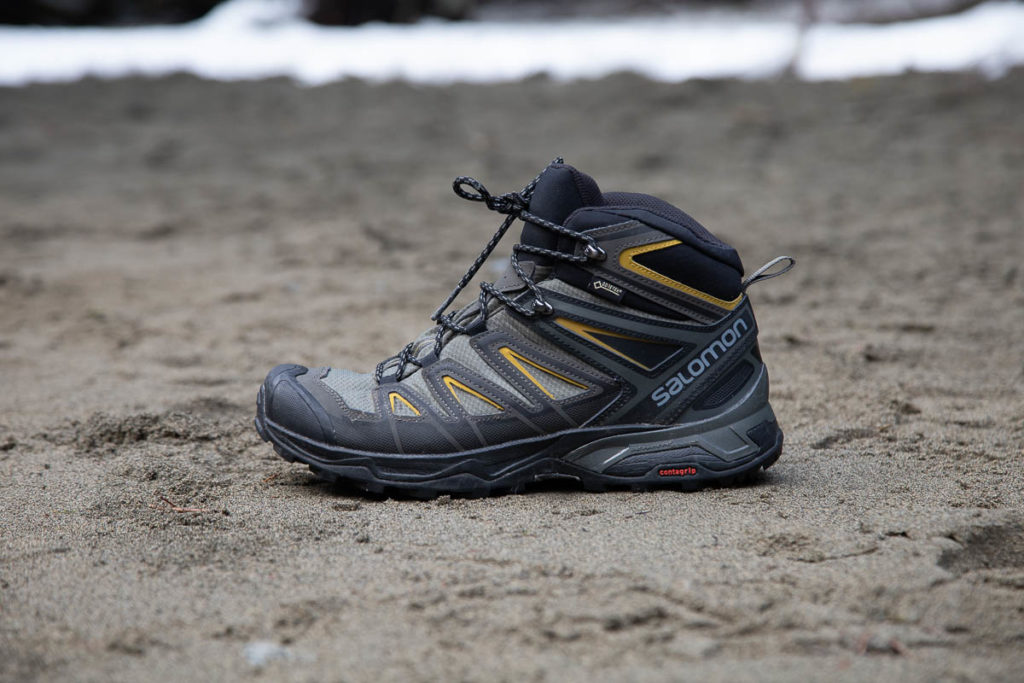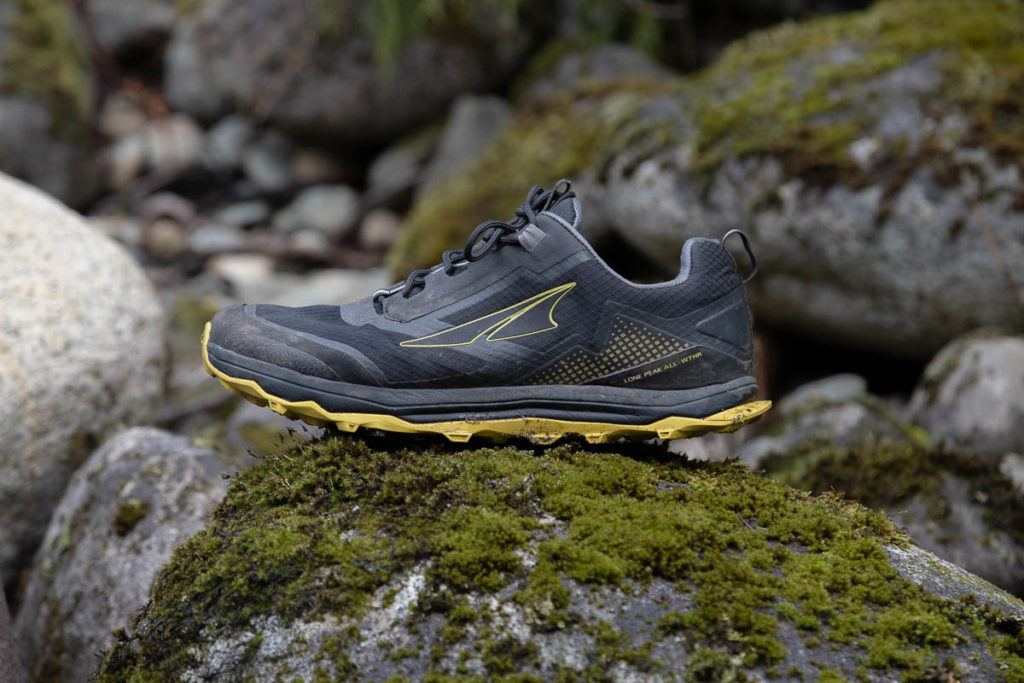Hiking boots have been around for over 100 years now. Up until the 80s hikers wore hiking boots and that was that.
Since the 80s there has been a slow and steady trend to lighter, more flexible hiking footwear. Hikers like Chris Townsend and Andrew Skurka that have hiked thousands of kilometers around the world have switched to trail runners for hiking in 3 season conditions.
Hiking shoes and trail runners are now two other great options for hiking that are lighter, more flexible and less expensive than hiking boots.
So should you always wear trail runners for hiking now? Or stick with hiking boots?
It depends.
The Spectrum of Hiking Boots, Hiking Shoes and Trail Runners
Hiking footwear all exists on a spectrum of weight, flexibility and cost. At one end is the heavy, specialist, expensive mountaineering boots. Moving down to the lighter options is hiking shoes in the middle being lighter, more flexible and less expensive. On the other end of weight and flexibility is trail runners. And if you really want to go far enough, you can get into sandals you can hike in as well.
When choosing footwear for a hike, pick the lightest type that you are comfortable with for the trip.
Terrain on hiking trips come in all shapes and sizes. Which is good because footwear does as well. What might make sense on a weekend hiking on a groomed trail might not with a week-long backcountry tip in rough alpine or bushwhacking through an unknown area.
Start from the lightest end of the spectrum and work your way back until you’re comfortable. This implies having multiple options as well. If you want to skip ahead to recommendations for beginners go to the end of the article.
But first, let’s dig into what hiking boots, hiking shoes and trail runners actually are and when and when you might use them.
What is a Hiking Boot?
Hiking boots are usually taller boots made of thicker leather or synthetic materials. They have laces up past the ankle on the boot. The soles are thick and durable with deep lugs on them. They usually have some sort of shank, or stiffener, that runs part or all of the way from heel to toe in the midsole, or in between the outer sole and your foot.
Hiking boots weigh anywhere from 1000 grams (35 ounces) per pair up to over 1300 grams (48 ounces). They can be waterproof or not.
Cost ranges between $100 and $500 depending on the size, materials and brand. More expensive models tend to be more specific to mountaineering or hunting.
Benefits
- Durable sole and upper materials
- Good traction in slippery conditions
- Ankle protection
- Stiff and stable midsole
Downsides
- Heavy
- Expensive
Hiking boots are durable with good traction and ankle protection. They have a stiff and stable midsole which is good for carrying heavy loads. But all that durability and stiffness comes at a cost: weight.

What is a Hiking Shoe?
Hiking shoes are a cross between hiking boots and trail runners. They are low cut with regular laces but still have some of the durability and stability from being built like a hiking boot. They can be waterproof or not.
Benefits
- lighter than hiking boots
- more flexible than hiking boots
- less expensive than hiking boots
- little to no break-in time
- more breathable than hiking boots
- stiffer than trail runners
Downsides
- heavier than trail runners
- less flexible than trail runners
What is a Trail Runner?
Trail runners are lightweight running shoes with good traction for the trail. They can fit well right out of the box. They’re very flexible making it easy to move quickly on the trail.
Compared to hiking boots and hiking shoes they are lighter, more flexible, more breathable and can be more comfortable. They can be waterproof or not.
Benefits
- lightweight
- flexible
- very breathable
- no break-in time
- very comfortable
Downsides
- less durable than hiking boots or shoes
- less foot protection

A lighter pack is easier on your feet
The more weight you are carrying the harder it is on your feet. Be kind to your feet and lighten the load on your back.
Take as little as possible on your hike, while staying safe and having a good time.
When you upgrade your gear, look for places when you can save weight. Newer jackets will weigh less. Newer backpacks will weigh less. Newer sleeping bags will weigh less. Gear that weighs less usually costs more as well so there’s always that budget to balance too.
Waterproof or not?
Hiking boots, shoes and trail runners often come with waterproof versions or not.
Waterproof means there is a waterproof membrane built into the boot or shoe to keep the water out. Most of the membranes say they’re breathable as well meaning the sweat your foot produces should escape out keeping your foot dry. This rarely happens in practice.
Most of the time sweat can’t escape from boots or can’t escape fast enough so your feet end up sweating. Moisture can cause blisters. Not good.
Where this can help though is in cold conditions. The little bit of sweat inside might be better than the cold snow on the outside.
Best Combination to Start
These are just our recommendations if you don’t know where to start. With all the comparisons above, you should have a pretty good idea of what each of the shoe types get you.
For just hiking: Hiking shoes
If you just want to hike, hiking shoes offer a good combination of heavier, more durable hiking boots and lighter, flexible trail runners.
They get you the benefits of a lighter shoe when you’re hiking but last longer than trail runners.
If you want to run in them as well then that’s slightly different case.
For hiking and running: Trail runners
If you want to run trails as well, then just getting trail runners lets you do both.
Trail runners don’t work well for carrying heavy packs much over 40 pounds so factor that into your plans. If you are only carrying a day pack or a lighter multi-day pack
Best Footwear Overall
3 season adventures: Trail runners
If you don’t get snow where you hike or only head out in spring, summer and fall, then you can probably get away with just trail runners. They’ll be lighter and more breathable than hiking boots and shoes, giving you more energy and speed on the trail.
4 season adventures: Hiking boots and trail runners
If you do enjoy the 4-season kind of adventure, then this is wear hiking boots can come in handy. The height, waterproofing and traction of hiking boots really come in handy.
At the end of the day, what you pick for hiking footwear is up to you. Comfort is the most important thing when sorting out what you’re going to hike in. When possible lean to the lighter weight options and you’ll be happier on the trail.